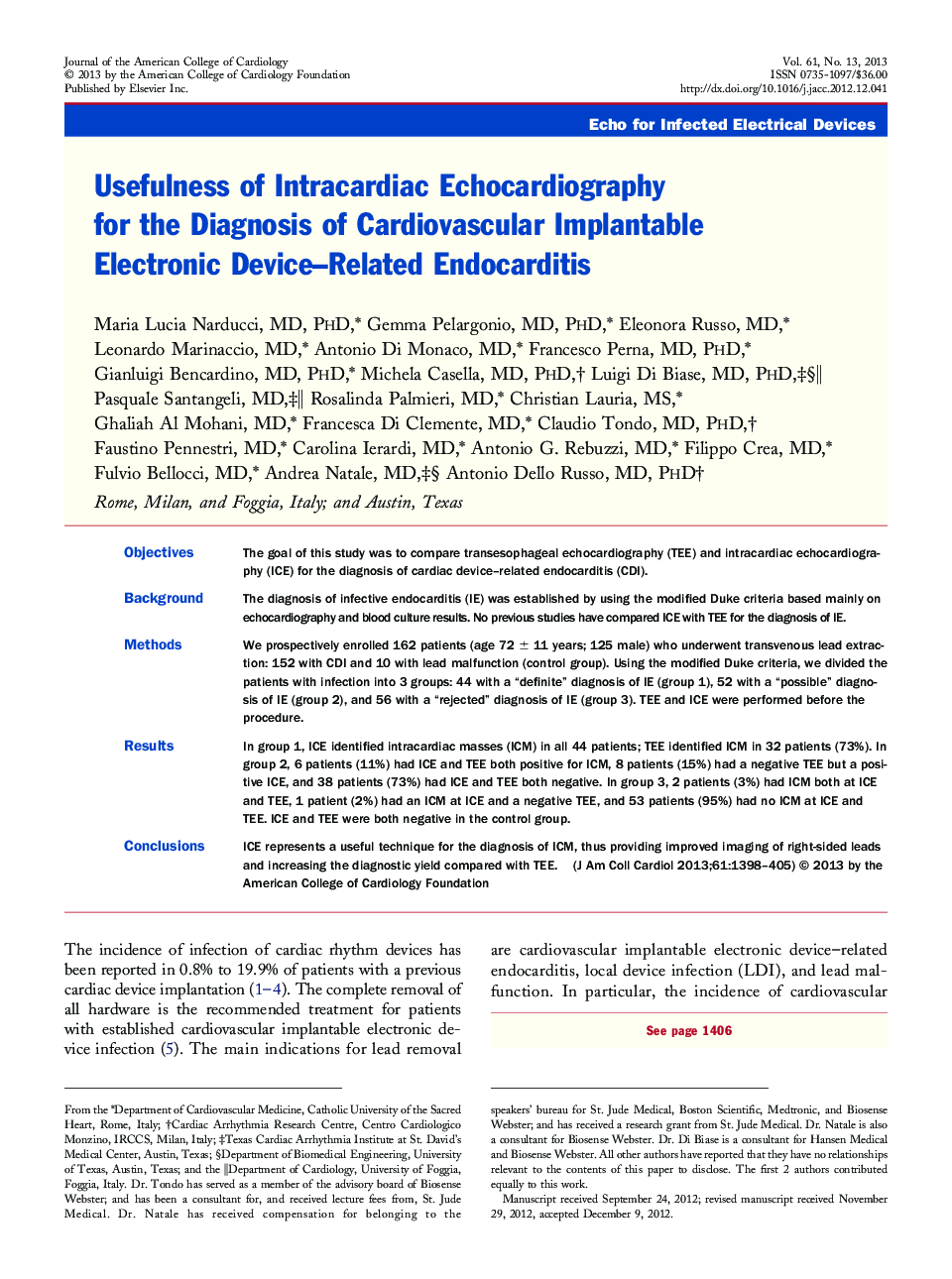| Article ID | Journal | Published Year | Pages | File Type |
|---|---|---|---|---|
| 5983210 | Journal of the American College of Cardiology | 2013 | 8 Pages |
ObjectivesThe goal of this study was to compare transesophageal echocardiography (TEE) and intracardiac echocardiography (ICE) for the diagnosis of cardiac device-related endocarditis (CDI).BackgroundThe diagnosis of infective endocarditis (IE) was established by using the modified Duke criteria based mainly on echocardiography and blood culture results. No previous studies have compared ICE with TEE for the diagnosis of IE.MethodsWe prospectively enrolled 162 patients (age 72 ± 11 years; 125 male) who underwent transvenous lead extraction: 152 with CDI and 10 with lead malfunction (control group). Using the modified Duke criteria, we divided the patients with infection into 3 groups: 44 with a “definite” diagnosis of IE (group 1), 52 with a “possible” diagnosis of IE (group 2), and 56 with a “rejected” diagnosis of IE (group 3). TEE and ICE were performed before the procedure.ResultsIn group 1, ICE identified intracardiac masses (ICM) in all 44 patients; TEE identified ICM in 32 patients (73%). In group 2, 6 patients (11%) had ICE and TEE both positive for ICM, 8 patients (15%) had a negative TEE but a positive ICE, and 38 patients (73%) had ICE and TEE both negative. In group 3, 2 patients (3%) had ICM both at ICE and TEE, 1 patient (2%) had an ICM at ICE and a negative TEE, and 53 patients (95%) had no ICM at ICE and TEE. ICE and TEE were both negative in the control group.ConclusionsICE represents a useful technique for the diagnosis of ICM, thus providing improved imaging of right-sided leads and increasing the diagnostic yield compared with TEE.
